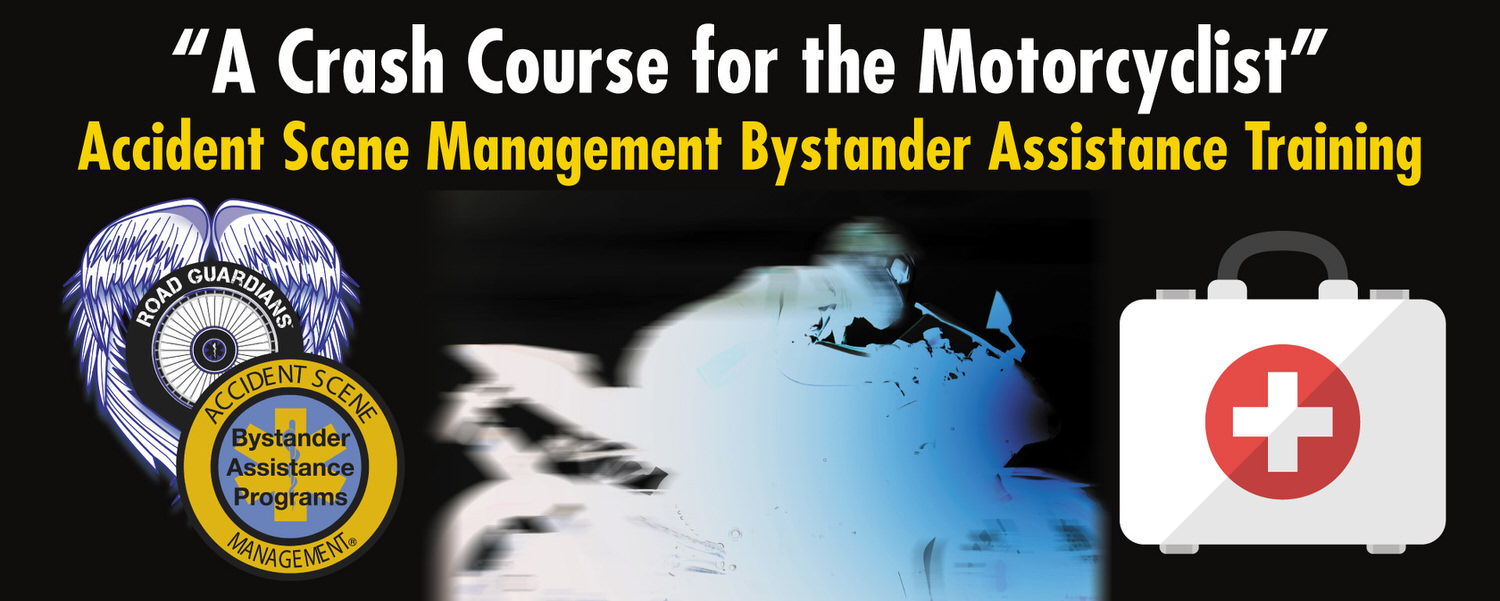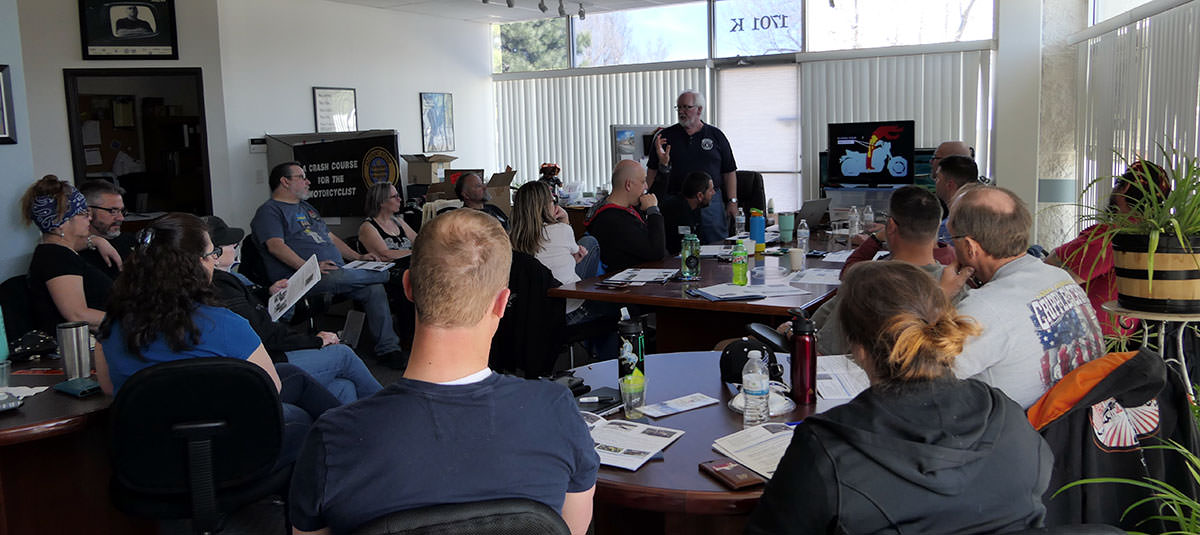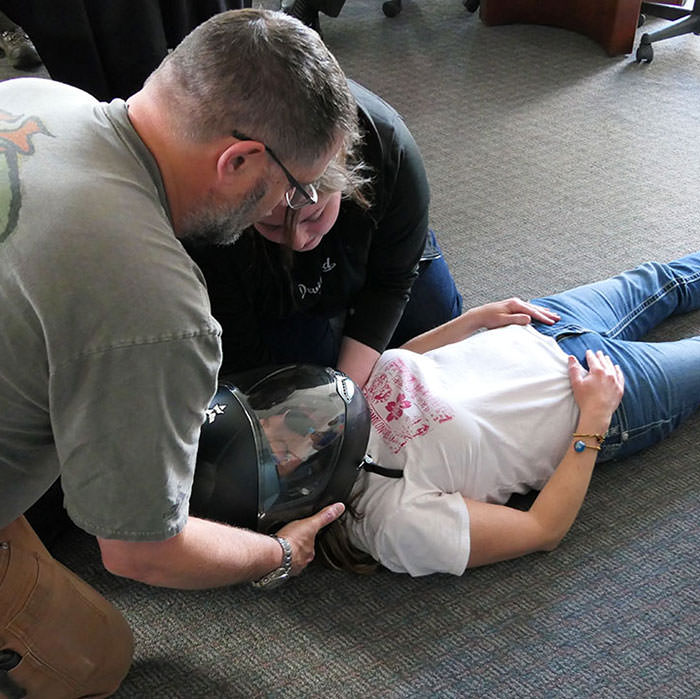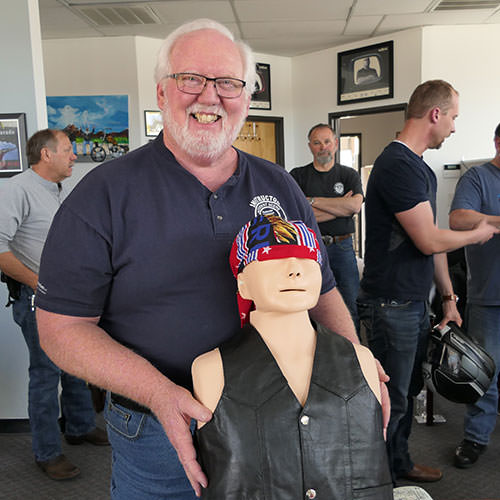
When I founded Rider Justice, I had many goals but, first and foremost, I want to make it safer for bikers to ride! We accomplish this through several efforts, including legislative advocacy (let’s end texting and driving!), and also by helping riders make sure they have the right motorcycle insurance (auto drivers don’t carry enough to cover the injuries they cause).
However, I believe nothing is quite as hands-on-important as helping bikers provide first aid and support to another rider who has been injured after going down.
Last year, I partnered with BikerDown to bring the Accident Scene Management (ASM) organization to Colorado to teach two Bystander Assistance (level 1) classes. The training was well-received and I even attended myself. It’s hard to express just how much important information you can learn in one day of this motorcycle-focused training.
That’s why I decided to sponsor more Bystander Assistant classes in 2019 through ASMI. They have trained over 35,000 riders across the U.S. and are the largest motorcycle trauma training organization in the world. Their goal is to “enhance the survival rate and reduce severity of injuries for the injured riders of all motorized vehicles.”

In addition to once again organizing the class with BikerDown, I wanted to ensure that this class was as accessible as possible for riders: I paid $50 toward each person’s registration making the cost per rider only $35. That seemed to give some incentive as we sold out the class a week in advance. On April 6th all 20 registered bikers were in attendance.
Training

How many of us have heard “never move an injured rider” or “never remove their helmet?” Well, sometimes leaving someone in the road may have fatal consequences and it’s impossible to give CPR to someone in a helmet. What makes the ASM class so fantastic is they not only teach how to safely move someone and how to remove a helmet, they teach the decision-making processes involved to help you know what to do and when.
ASM has a process called “PACT” to help guide riders through an accident scenario to:
-
P = Prevent further injury
-
A = Assess the situation
-
C = Contact EMS
-
T = Treat injuries
Each step of PACT consists of multiple evaluations and considerations that help guide a person assisting at an accident scene.
Why Specialty Training
A theme that came up throughout the day was “mechanism of injury.” Attendees were taught to evaluate how a collision occurred and consider the most likely injuries a rider might have based on the mechanism of injury. This helps determine the best course of assistance.
For example, head-on collisions generally cause different injuries than a side swipe. Laying a bike down causes different injuries than an ejection accident. Knowing the mechanism of injury will help you decide how to proceed with helping an injured rider.
The instructor even time spent teaching people best practices for communicating with an injured rider and managing other emotional riders and witnesses who may be on-scene. Additionally, attendees learned how to effectively and efficiently pass the injured rider to EMS upon arrival.
ABATE of Colorado

We were fortunate enough that ABATE of Colorado allowed us to use their offices in Aurora for the training. Don Enninga, our local ASM trainer, is a longstanding member of ABATE and we are grateful he could coordinate the location on our behalf. Don has a passion for teaching these safety courses and it shows in his presentation.
Class Reactions
Brittany attended the class because she is studying to become a rider coach for the Motorcycle Safety Foundation. She wants to be able to help her students if they are hurt on the course. Both her parents have also gone through the ASM class and they do many group rides together.
“Now, if something happens to one of us, there’s at least two other people who would be able to step in,” said Brittany.
Kathy said, “Don is a great instructor. His EMT rescue background was really instrumental in explaining things. I just feel like I’m more capable should I come across a situation when I’m riding.”
She added, “The people that I ride with, I’m going to tell them all about it because if I’m the one that goes down, I want them to have the skills to stabilize me or prevent further trauma or injury.”
Ray has already had the unfortunate experience of seeing his father crash his bike on a ride and said, “I had no clue what to do. So, I figured this was a great class for me so I would know what to do. There was a lot of great information.”
This was Bill’s third time taking the ASM Bystanders Assistance class. He said, “I keep coming because I want to be proficient if I ever need to use this. I don’t want to feel helpless and not able to help one of my brothers that’s down.”
He also wanted to encourage others to get this training.
“The more people who take these classes, the more chances we have of saving a life. If you have one of your buddies take these classes, the next time you’re down, they may be able to help you.”
We Even Provided Food!
Thank you to BikerDown for donating breakfast for our group so that our class was well fed to start the day! Rider Justice provided lunch so everyone could stay focused throughout the afternoon.
We are planning to sponsor another Bystanders Assistance class this Fall and possibly an advanced class as well. Follow our Facebook page for announcements or check our events page regularly.
If you would like to take an ASM class sooner, contact Don Enninga: 970-768-5599
